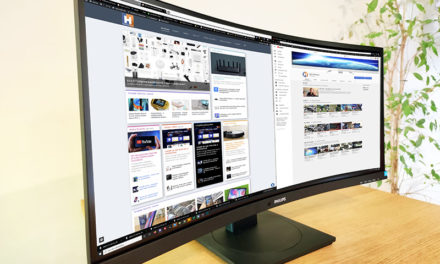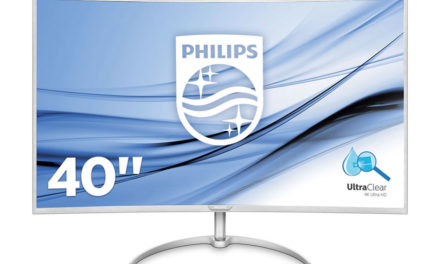
Philips 349X7FJEW - Ultra wide screen, ultra good picture

If I have to describe the look, I’m going to have a hard time, and not because they’ve created such a nail-biting design for the monitor, quite the contrary. If we search for the words for a long time, we can find the clean one as the most appropriate. Perhaps elegant may still come into play. The only worthwhile, interesting detail is the base, the parts of which extend towards us are chrome-plated and thin, creating a really airy effect, especially since there is a small, unspeakable display on the monitor above them. To feel what the small unspeakable display means let’s see the numbers. The Philips monitor measures 810 mm x 444 mm x 292 mm and weighs 8,21 kilograms. The aspect ratio is 21: 9 and the curvature of the display is 1800R.
At the 40-inch giant, I remarked that apart from being able to tilt the monitor a little bit, we have no other adjustment. It wouldn't have made much sense either, since the clouds were still scratched by the upper cava. With this display, the possibility of lifting is no longer lacking, as the panel height makes this necessary and allows. You can, of course, decide. The two missing features are horizontal and vertical rotation. The former is suspected to be left behind due to the width of the panel, the width could easily change the center of gravity during rotation so much that the monitor overturns. Vertical rotation, commonly known as PIVOT mode, would make no sense, so I didn't miss it in the slightest.

From the front, there is essentially only the lower cava. There is only a frame about 1 millimeter thick or rather thin on both sides and sides. After turning on, of course, it turns out that there is some turbidity, because although it is only one millimeter of plastic, the displayed image is still at least eight millimeters from the plastic frame.
No controls can be found on the coffee either in front or at the bottom, in front only the edge-lit plexiglass labeled Philips takes up a little space at the bottom, in the middle. The controls are replaced by the usual small joystick, and very efficiently. It allows you to quickly navigate the menu and switch functions.

In line with the joystick, find the connectors on both sides of the stand. Seen from the rear, going from left to right, we find a USB HUB with one input and four outputs. The connectors are blue, so they are USB 3.0 standard. Next to them, and on the other side of the stand, there is an HDMI connector, one of which is 1.4 and the other is 2.0. They are followed by the Display port, which supports the 1.2 standard. Finally, we find a speaker output and a microphone input, and finally a power connector. The monitor was given a very large external power supply anyway, luckily they didn't want to incorporate it into the display, it would have seriously increased its weight, which is not a small number anyway.

On the stand, it is also worth noting that not only the forward-extending sole part, but also the back half became very showy. We can safely say that this is the most beautiful part of the monitor, it is a pity that it is in the back and we do not see it only during dusting.















